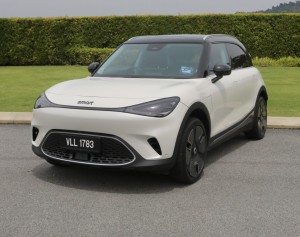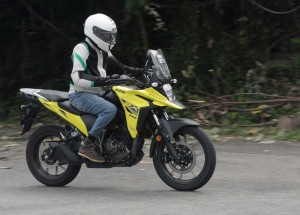MUNICH: The 3.0 CSL that BMW has just unveiled signifies the culmination of celebrations worldwide this year to mark the 50th anniversary of M.
We saw the arrival of the new M3 Touring, M4 CSL and M2 earlier in the year. And now, it's the turn of the 3.0 CSL to bask in the spotlight.
Only 50 consecutively numbered units of the special model will go on sale.
BMW said the 3.0 CSL was developed with the intention of combining the best of five decades of racing expertise from M in an automobile with a highly emotional aura.
All facets of its character – dynamic exterior elegance, a classic sportscar cockpit, intelligent lightweight construction, a straight six-cylinder engine, a 6-speed manual transmission and rear-wheel drive – are based on traditional principles of an M automobile.

They complement each other with the help of the latest technology to create the ultimate symbol of fascination for top performance in the style of the brand that has been successful for 50 years.
The production of all vehicles at the Dingolfing plant in Germany will take around three months.
The new 3.0 CSL features the most powerful straight six-cylinder engine ever used in a road-legal M car.
The previous 3.0 CSL engine made 151kW/206hp. Since then, the straight six-cylinder engine with M Power has undergone an impressive development. Engines of the same design mobilised an output of 204 kW/277 hp in the M1 as early as 1978 and 250 kW/340 hp in the second-generation M5 from 1991.

The fifth-generation M3 was launched in 2014 with a 317 kW/431 hp straight-six engine featuring M TwinPower Turbo technology.
The drive system in the new 3.0 CSL uses M TwinPower Turbo technology, giving a maximum output of 412 kW/560hp and peak torque of 550Nm.
The straight six-cylinder engine is coupled with a 6-speed manual gearbox whose spread and transmission ratios are ideally matched to the performance characteristics.
Precisely defined gear shift travel enables fast and precise gear changing. The gearshift knob made exclusively for the 3.0 CSL protrudes from the centre console and is a luxurious accessory.

The exclusive interior carbon fibre reinforced plastic (CFRP) components are produced by hand both in Munich and at the BMW Group component factory in Landshut by specially assigned bodywork specialists.
A specific process was conceived for the paintwork of the 3.0 CSL, in which each individual part has its characteristic colour design. In addition, a team of 30 specially qualified and experienced technicians is responsible for the configuration and assembly of the vehicles.
Due to the complexity of the processes in the factory, each 3.0 CSL passes through eight assembly cycles at just as many production stations, a procedure that takes up to 10 days in all.
The high level of manual work means that the time required to assemble a 3.0 CSL is many times higher than that of a conventional M car.
After completion in the factory, each vehicle also undergoes a multi-stage quality inspection and approval process at the main Dingolfing plant before it is released for delivery to the customer.
The Dingolfing plant is the company’s largest European production site. In addition to several M cars, the luxury sedans of the 7 Series and body components for Rolls-Royce Motor Cars are produced there.

The 3.0 CSL is the reincarnation of a legendary sports car both for the racetrack and the road. In the founding year of BMW Motorsport GmbH, the historic 3.0 CSL was developed for use in touring car competitions, where it became the most successful racing car of its era.
It won the European Touring Car Championship during its inaugural season in 1973 – and repeated this title win five more times in succession from 1975 to 1979.
The road version of the racing car, which was developed for homologation purposes, became a widely known symbol of inspiring driving pleasure focused on the essentials, especially in its final stage of development.

CSL – this combination of letters in the model designation stood for “Coupé, Sport, Leichtbau” (Coupe, Sport, Lightweight), a concise summary of the two-door car’s recipe for success.
In addition to wide wheel arches, its coupe-shaped body also received an eye-catching aerodynamics package, which included a front spoiler, air bars on the front side panels and a roof spoiler.
Completing the design modifications vs. the other coupes in BMW large series was a rear wing that optimised the grip of the rear wheels.
It was not approved for road use and therefore lay in the boot when the vehicle was delivered, but nevertheless received much public attention so that the Coupe was given the nickname “Batmobile”.

With an increased displacement of 3,153cc and a maximum output of 206 hp, the most powerful straight six-cylinder engine with direct injection ever used in a BMW model ensured sporty power delivery.
The powerful drive system was combined with refined suspension technology. Its unladen weight was just 1,270kg.
The reduced weight was achieved through comprehensive lightweight construction. The doors were made of aluminium, as were the bonnet and the boot lid, which were supported on filigree retaining rods after opening.
Numerous other body components such as the roof, side panels and luggage compartment partition were made of particularly thin sheet metal, and the chrome bumpers were replaced by plastic skirting.

Lightweight bucket seats and the omission of insulation material, power steering and electric windows ensured optimal weight reduction. An overall power-to-weight ratio of 6.2 kilograms per horsepower was thus achieved.
The new 3.0 CSL is the contemporary reinterpretation of all these features anchored in its model designation. Its coupe-shaped body sets traditional accents for sporty elegance and expressive dynamics. Its drive and suspension technology stems from the latest developments for racing cars and high-performance sports cars from M.
And the lightweight construction reaches an outstanding level, above all through the extensive use of carbon. The power-to-weight ratio of the BMW 3.0 CSL is a mere 2.9 kilograms per hp.
With its classic coupe proportions and a traditional vehicle concept that combines a front engine and manual transmission with rear-wheel drive, the new 3.0 CSL follows in the footsteps of its historic ancestor.

Distinctive air deflection elements, powerfully shaped wheel arches, a striking rear spoiler and numerous other details are based on the design of the legendary coupe from the 1970s.
The forged light-alloy wheels (20-inch in front, 21-inch in rear) are fitted with Michelin tyres developed exclusively for the 3.0 CSL. They bear the number 50 embossed on the tyre sidewalls, providing a subtle reference to the anniversary of M.
In addition to the roof, bonnet and boot lid, the front and rear aprons are made entirely of carbon. The front and rear side panel attachments, the side sills, the rear diffuser, the rear wing and rear spoiler are also made of the high-tech material.
All carbon components are manufactured in small series, mostly by hand for the 3.0 CSL.

The most striking feature at the back is the rear wing, which is enclosed at the side and translates the characteristic appearance of the “Batmobile” into a modern design language.
Designed to generate additional downforce and thus optimise traction on the rear axle, the air deflector encloses the entire rear section, thus becoming a dominant visual element. For aerodynamic sake, it is combined with a strongly pronounced carbon diffuser in the rear apron, thereby optimising airflow in the underbody.
The interior also sees the use of carbon and other lightweight construction. Instead of additional seats, the rear offers a storage compartment with two integrated helmet compartments.

CFRP trim in the door panels and reduced acoustic insulation. The driver and front passenger sit in M Carbon full bucket seats. The diagonal connections between the seat surface and the backrest are reminiscent of the construction principle of the lightweight seats featured in the historic model.
Seat height and inclination can be adjusted exclusively via a three-stage screw linkage in a workshop.
The sports car cockpit uses black Alcantara seat surfaces and M seat belts are combined with an M Alcantara steering wheel, an anthracite roof liner, black Alcantara and matt carbon surfaces.
Contrast stitching and other accents in white correspond with the exterior paintwork of the 3.0 CSL.

The matt interior trims in a carbon fibre finish feature sequential numbering for each of the 50 units available.
This marking, documented in the interior from #01/50 to #50/50, corresponds in each case to the final digits of the suspension number, thus representing a clearly visible and authentic reference to the individual vehicle identity.



















